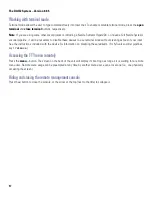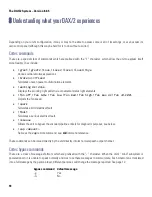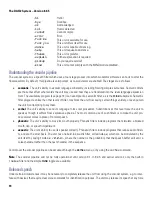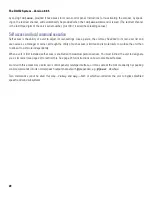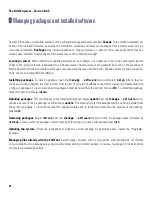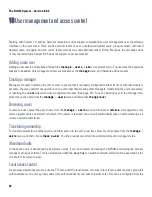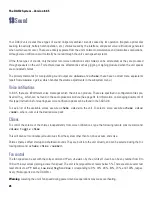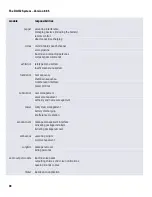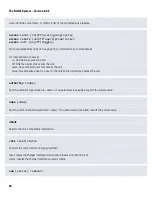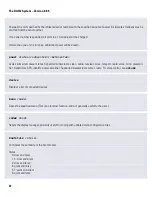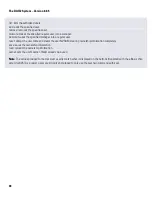
The DAX/2 System – Version 8.0.5
27
14 Scripting actions with Arabesque
The Arabesque scripting system allows the execution of macros specified by the user. These scripts may carry out any func-
tion on the unit that does not require administrative access, as well as play sounds, start and stop pre-recorded animation
programs, and command the unit to say or act in a certain way.
Arabesque scripts use the filename prefix “
a_
”, and can be activated from the
perform
menu, or via the
do
command.
Each line of the script specifies an action to execute. Be aware that the unit can only run one script at a time, and that addi-
tional power is expended in the process of executing these scripts.
In addition to the commands available to the user via remote access (see page 35), Arabesque scripts may contain the fol-
lowing verbs:
start
<animation>
This begins the specified animation, which must be included in the writable memory of the unit alongside the script.
stop
<animation>
This stops the specified animation.
sound
<sound>
This plays the specified sound, which must either be loaded onto the audio processor or referred to directly by
UUID.
vox
<sound>
This plays one of the messages from the included voice notification pack. See page 26 for more information on
voice notifications.
remark
<message>
This reports a message privately to the unit.
say
<message>
This causes the unit to say something. The message may contain speech-processor-level commands such as bang
commands, dot commands, or emotes. (See page 18.) This will operate even if the unit’s cortex prohibits spontane-
ous free speech.
wait
<duration>
Pauses execution for
<duration>
seconds.
disable
<subsystem>
Disables subsystem number
<subsystem>
.
enable
<subsystem>
Enables subsystem number
<subsystem>
.





